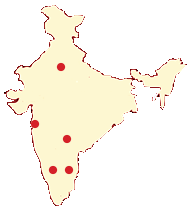Overview
What is CT Angiography?
Angiography is a minimally invasive medical test that helps physicians diagnose and treat medical conditions. Angiography uses one of three imaging technologies and, in some cases, a contrast material to produce pictures of major blood vessels throughout the body.
Angiography is performed using:
 x-rays with catheters
x-rays with catheters
 computed tomography (CT)
computed tomography (CT)
 magnetic resonance imaging (MRI)
magnetic resonance imaging (MRI)
 CT imaging uses special x-ray equipment to produce multiple images and a computer to join them together in multidimensional views. In CT angiography (CTA), computed tomography using a contrast material produces detailed images of both blood vessels and tissues.
CT imaging uses special x-ray equipment to produce multiple images and a computer to join them together in multidimensional views. In CT angiography (CTA), computed tomography using a contrast material produces detailed images of both blood vessels and tissues.
What are the limitations of CT Angiography?
A person who is very large may not fit into the opening of a conventional CT scanner or may be over the weight limit for the moving table.
CT angiography should be avoided in patients with advanced kidney disease or severe diabetes, because x-ray contrast material can further harm kidney function.
If a patient’s heart is not functioning normally, or if there are multiple blocked blood vessels, CT angiograms may be hard to interpret. CT angiograms are not yet as reliable as selective catheter injections (performed after puncture of the artery in the groin) in imaging small tortuous arteries, particularly coronary arteries in the rapidly moving heart.
Angiography is an x-ray technique where dye is injected into the chambers of your heart or the arteries that lead to your heart (the coronary arteries). The test lets doctors measure the blood flow and blood pressure in the heart chambers and see if the coronary arteries are blocked. Angiography is a very safe test. The dye used for the test is harmless, and by drinking lots of liquids after the test, you can help rid your body of the dye. Some people may have an allergic reaction to the dye, but this is rare. Tell your doctor before the test if you are allergic to iodine, shellfish, or strawberries.
What are the benefits vs. risks ?
Benefits :-
Angiography may eliminate the need for surgery. If surgery remains necessary, it can be performed more accurately.
CT angiography is able to detect narrowing of blood vessels in time for corrective therapy to be done.
CT angiography gives more precise anatomical detail of blood vessels than magnetic resonance imaging (MRI).
Many patients can undergo CT angiography instead of a conventional catheter angiogram.
Compared to catheter angiography, which involves placing a catheter (plastic tube) and injecting contrast material into a large artery or vein, CT angiography is a much less invasive and more patient-friendly procedure.
Risks :-
There is always a slight chance of cancer from excessive exposure to radiation. However, the benefit of an accurate diagnosis far outweighs the risk.
If you have a history of allergy to x-ray contrast material, your radiologist may advise that you take special medication for 24 hours before CT angiography to lessen the risk of allergic reaction. Another option is to undergo a different exam that does not call for contrast material injection.
If a large amount of x-ray contrast material leaks out from the vessel being injected and spreads under the skin where the IV is placed, skin damage or damage to blood vessels and nerves, though unlikely, can result. If you feel any pain in this area during contrast material injection, you should immediately inform the technologist.
Women should always inform their physician and x-ray or CT technologist if there is any possibility that they are pregnant.
Nursing mothers should wait for 24 hours after intravenous contrast material injection before resuming breast-feeding.
How does Cardiac CT Angiography work ?
A Coronary CTA comes from a special type of X-ray examination. Patients undergoing a Coronary CTA scan receive an iodine-containing contrast dye as an IV solution to ensure the best images possible. The same IV in the arm may be used to give a medication to slow or stabilize the patient’s heart rate for better imaging results. During the examination, which usually takes about 10 minutes, X-rays pass through the body and are picked up by special detectors in the scanner.
 Typically, higher numbers (especially 16 or more) of these detectors result in clearer final images. For that reason, Coronary CTA often is referred to as “multi-detector” or “multi-slice” CT scanning. The information collected during the Coronary CTA examination is used to identify the coronary arteries and, if present, plaques in their walls with the creation of 3D images on a computer screen.
Typically, higher numbers (especially 16 or more) of these detectors result in clearer final images. For that reason, Coronary CTA often is referred to as “multi-detector” or “multi-slice” CT scanning. The information collected during the Coronary CTA examination is used to identify the coronary arteries and, if present, plaques in their walls with the creation of 3D images on a computer screen.
Your doctor uses the cardiac CT to evaluate : -
 The heart muscle
The heart muscle The coronary arteries
The coronary arteries The pulmonary veins
The pulmonary veins The thoracic and abdominal aorta
The thoracic and abdominal aorta The sac around the heart (pericardium)
The sac around the heart (pericardium)What to expect in Cardiac CT Angiography ?
 You will change into a hospital gown.
You will change into a hospital gown. A nurse will insert an IV line into a vein in your arm to administer contrast (dye) during your procedure.
A nurse will insert an IV line into a vein in your arm to administer contrast (dye) during your procedure. You will lie on a special scanning table.
You will lie on a special scanning table. The technologist will clean three small areas of your chest and place small, sticky electrode patches on these areas. Men may expect to have their chest partially shaved to help the electrodes stick. The electrodes are attached to an electrocardiograph (ECG) monitor, which charts your heart’s electrical activity during the test.
The technologist will clean three small areas of your chest and place small, sticky electrode patches on these areas. Men may expect to have their chest partially shaved to help the electrodes stick. The electrodes are attached to an electrocardiograph (ECG) monitor, which charts your heart’s electrical activity during the test. You will lie on the scanner table, and you will be asked to raise your arms over your head for the duration of the exam.
You will lie on the scanner table, and you will be asked to raise your arms over your head for the duration of the exam. During the scan, you will feel the table move inside a donut-shaped scanner. You will receive a contrast agent through your IV to help produce the images. It is common to feel a warm sensation as the contrast circulates through your body.
During the scan, you will feel the table move inside a donut-shaped scanner. You will receive a contrast agent through your IV to help produce the images. It is common to feel a warm sensation as the contrast circulates through your body. Once the technologist is sure that all the information is collected, the IV will be removed.
Once the technologist is sure that all the information is collected, the IV will be removed.
How to prepare for Cardiac CT Angiography ?
 Avoid any caffeinated drinks on the day before or the day of your exam. Coffee, tea, energy drinks, or caffeinated sodas.
Avoid any caffeinated drinks on the day before or the day of your exam. Coffee, tea, energy drinks, or caffeinated sodas. Avoid energy or diet pills on the day before or the day of your exam (ask your doctor if you have questions).
Avoid energy or diet pills on the day before or the day of your exam (ask your doctor if you have questions). Do not use Viagra or any similar medication on the day before or the day of the exam. It is not compatible with the medications you will receive during the procedure (ask your doctor if you have questions).
Do not use Viagra or any similar medication on the day before or the day of the exam. It is not compatible with the medications you will receive during the procedure (ask your doctor if you have questions). On the day of your exam,do not eat for four hours prior to your scheduled appointment. You may drink water.
On the day of your exam,do not eat for four hours prior to your scheduled appointment. You may drink water. If you are diabetic, ask your physician how to adjust your medications the day of your test. If you think your blood sugar is low, tell the technologist immediately.
If you are diabetic, ask your physician how to adjust your medications the day of your test. If you think your blood sugar is low, tell the technologist immediately. Tell your technologist and your doctor if you are : -
Tell your technologist and your doctor if you are : -o Pregnant
o Allergic to iodine and/or shellfish or any medications
o Undergoing radiation therapy
o Over 60 years old or have a history of kidney problems (you may be required to have a blood test to evaluate your kidney function prior to receiving any contrast agent)
After the Cardiac CT Angiography procedure : -
 You may continue all normal activities and eat as usual after the test.
You may continue all normal activities and eat as usual after the test. Your physician will discuss the results of your test with you.
Your physician will discuss the results of your test with you.
Who should consider Coronary Cardiac CT Angiography ?
The single most important step for patients trying to determine whether they should consider a Coronary CTA is consultation with their primary physician. This is because some Coronary CTA uses are more appropriate than others, and the scan carries some risk from X-ray exposure (potential for stimulating cancer) and contrast dye exposure (allergic reactions and kidney damage). Applying careful patient selection and risk-reduction efforts, The Cleveland Clinic has successfully performed more than 13,000 clinical cardiac CT examinations over the past two-year period, many for Coronary CTA.
 Overall, Coronary CTA examinations have tended to help determine a lack of significant narrowing and calcium deposits in the coronary arteries, as well as a presence of fatty deposits. This has been found to be particularly valuable in asymptomatic patients with higher risk for coronary disease, in patients with atypical symptoms but lower risk of coronary disease, or in patients with unclear stress-test results.
Overall, Coronary CTA examinations have tended to help determine a lack of significant narrowing and calcium deposits in the coronary arteries, as well as a presence of fatty deposits. This has been found to be particularly valuable in asymptomatic patients with higher risk for coronary disease, in patients with atypical symptoms but lower risk of coronary disease, or in patients with unclear stress-test results.
As a result, the Center for Integrated Non-Invasive Cardiovascular Imaging at The Cleveland Clinic currently supports the careful use of Coronary CTA for patients who have:-
 Intermediate to high-risk profiles for coronary artery disease, but who do not have typical symptoms (especially chest pain, shortness of breath, or fatigue during heavy physical activity.)
Intermediate to high-risk profiles for coronary artery disease, but who do not have typical symptoms (especially chest pain, shortness of breath, or fatigue during heavy physical activity.) Unusual symptoms for coronary artery disease (such as chest pain unrelated to physical exertion), but low to intermediate risk profiles for coronary artery disease.
Unusual symptoms for coronary artery disease (such as chest pain unrelated to physical exertion), but low to intermediate risk profiles for coronary artery disease. Unclear or inconclusive stress-test (treadmill test) results.
Unclear or inconclusive stress-test (treadmill test) results.
For these types of patients, Coronary CTA can provide important insights to their primary physician into the extent and nature of plaque formation with or without any narrowing of the coronary arteries. Coronary CTA also can non-invasively exclude narrowing of the arteries as the cause of chest discomfort and detect other possible causes of symptoms. But again, initial consultation with their primary physician is key for patients seeking to determine the appropriateness of Coronary CTA.
Carotid Angiography :-
A carotid angiogram is an x-ray used to detect narrowing or blockages in the carotid arteries (the main arteries in the neck that supply blood to the brain). During an angiogram, an x-ray contrast solution is injected into one or more arteries. X-rays then capture images of blood flow through the arteries.
Renal Angiography:-
A renal angiogram is used to detect narrowing or blockages in the renal arteries (the arteries that supply blood to the kidneys). During an angiogram, an x-ray contrast solution is injected into one or more arteries. X-rays then capture images of blood flow through the arteries
For more information, medical assessment and medical quote
as email attachment to
Email : - info@wecareindia.com
Contact Center Tel. (+91) 9029304141 (10 am. To 8 pm. IST)
(Only for international patients seeking treatment in India)










